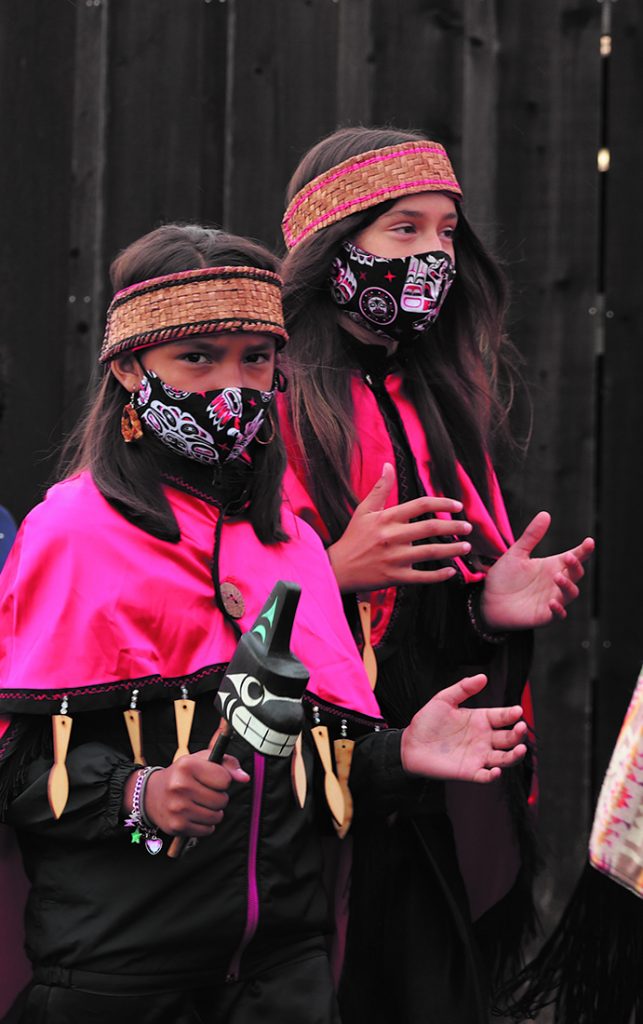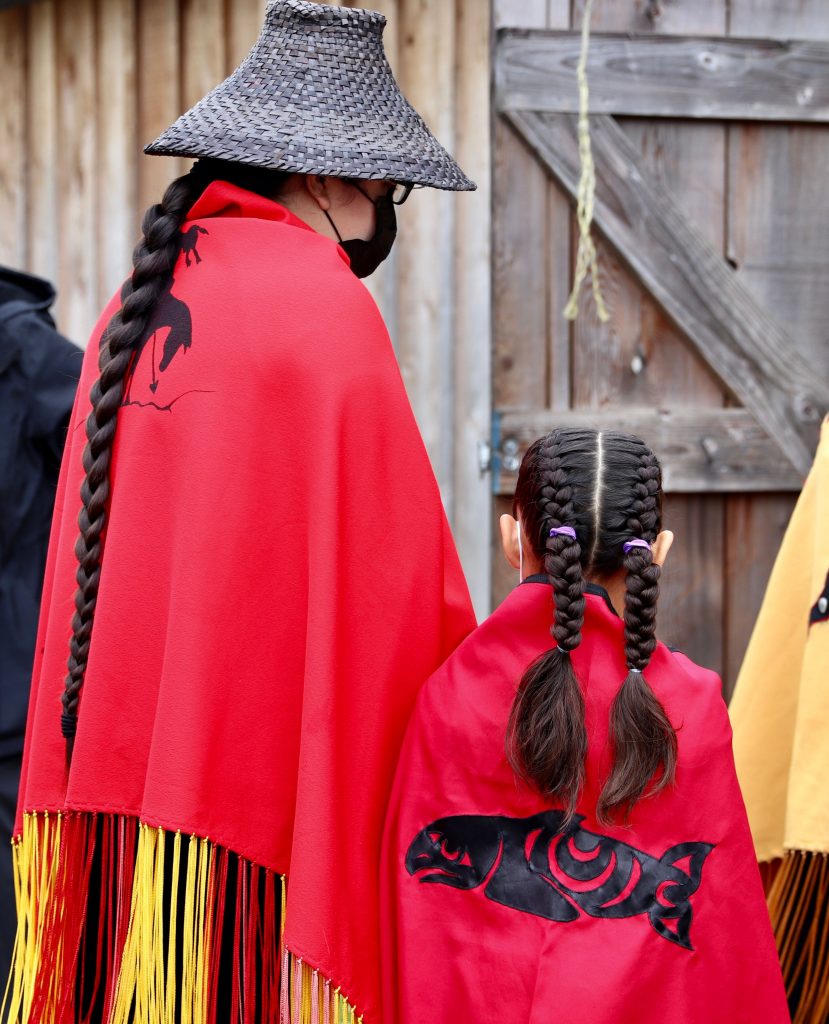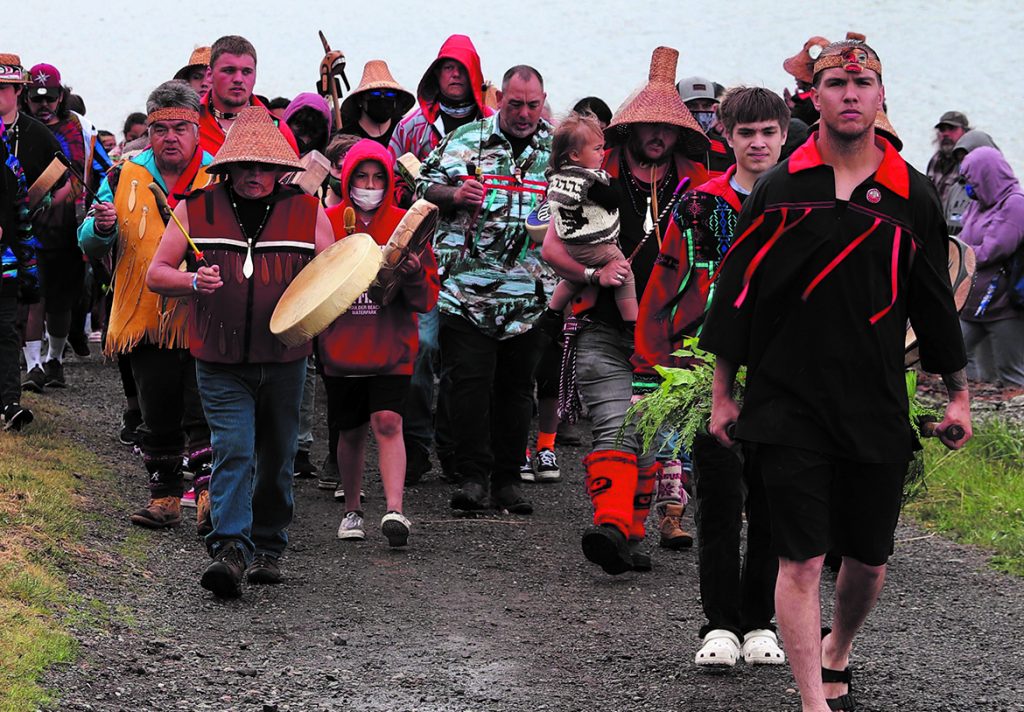
Honoring King Salmon
By Kalvin Valdillez, Tulalip News
Last year, for the first time in over four decades, the Tulalip Tribes made the difficult decision to cancel the Salmon Ceremony to help limit the spread of COVID-19 at the height of the worldwide pandemic. During the yearly event, not only does the Tribe pay respect to the entire salmon species but they also provide the tribal fishermen with a blessing for a plentiful and safe season out on the water, while also sharing good traditional medicine along the way.
After nearly two calendar years, smoke billowed once again from the longhouse overlooking Tulalip Bay on the morning of June 5, as Tulalips gathered in traditional regalia to immerse themselves into their culture, practice the teachings of their ancestors and most importantly recognize, honor and celebrate yubəč, the king salmon.
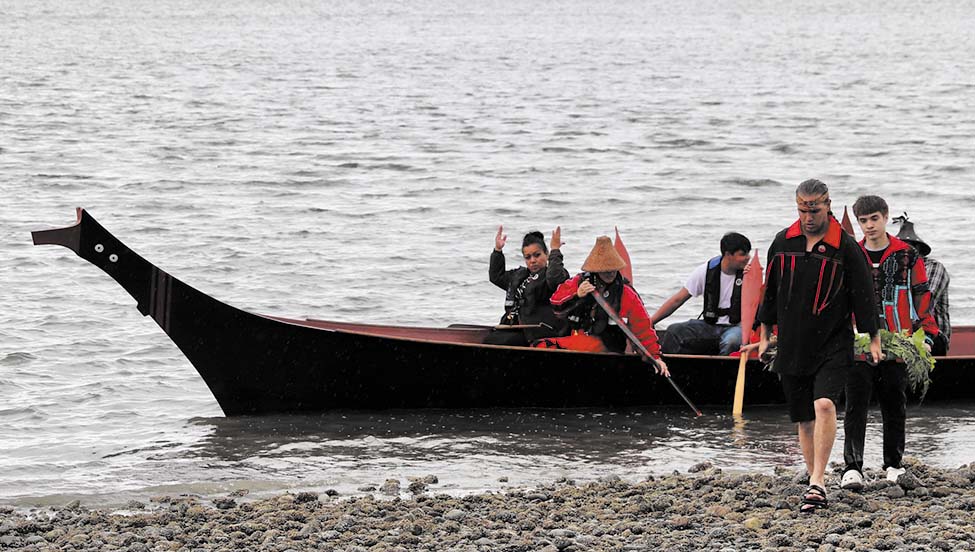
To really get an understanding of the significance of this ceremony and what it means to the Tulalip people, one must first delve into the Tribe’s history and learn of their stories passed through the generations. As you may know, salmon are integral to the Tulalip culture, diet, and tribal lifeways. Pre-contact, and prior to the current decline of the salmon population, this delicious source of nourishment swam through the Salish Sea, through local rivers and lakes, in abundance. The Tulalips have a traditional story that explains why the salmon returned each year in such great quantities. Back in 1993, Bernie ‘KyKy’ Gobin provided a fantastic retelling of the story Salmon Man, as told by Harriette Shelton-Dover, for the Marysville School District and it goes as follows:
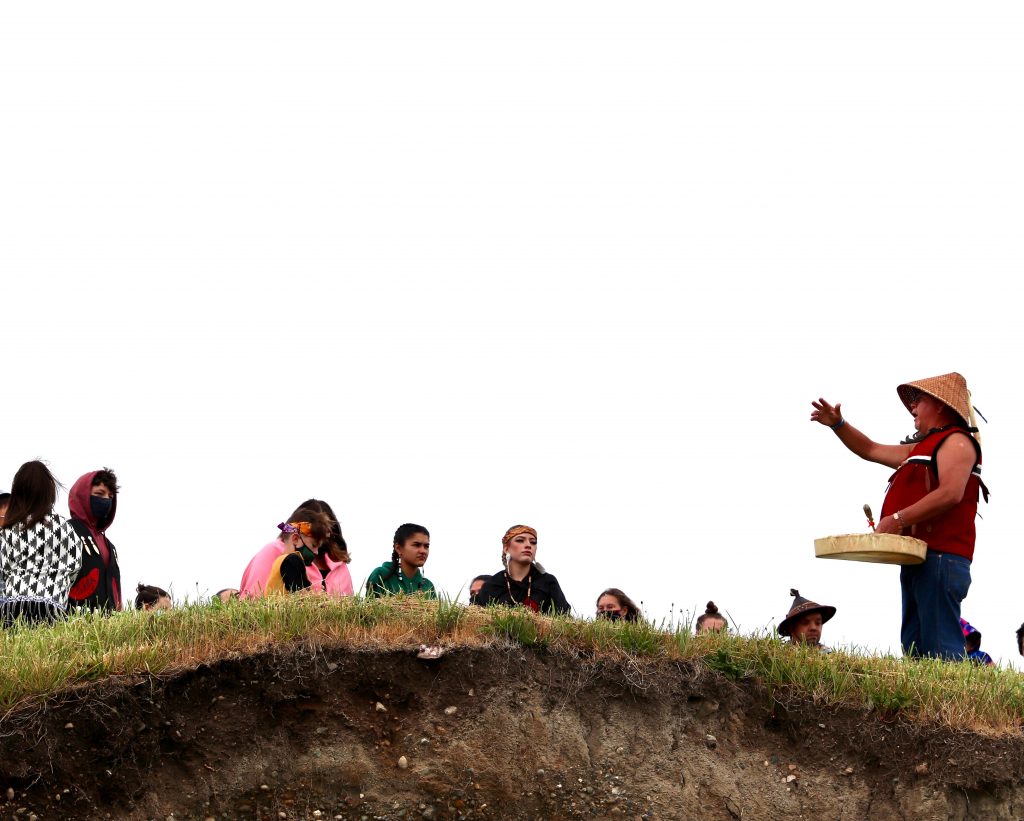
This is one version of the Salmon Man. You might have heard about the Tulalip Salmon Festival. The Salmon Festival was something that was practiced for hundreds of years by the Snohomish people, the sduhubš people. They are also called ‘the salmon people’. And the story’s extremely important because it links to the present day.
And the story goes that there is a tribe of Salmon People that live under the sea. And each year, they send out scouts to visit their homeland. And the way that the Snohomish people recognize that it’s time for the salmon scouts to be returning to their area is when, in the spring, a butterfly comes out. And the first person to see that butterfly will run, as fast as they can, to tell our chiefs or headmen or, now, they are called the chairman. One of the other ways they recognize that the salmon scouts are returning is when the wild spirea tree blooms. The people call it the ironwood tree, and that’s what they use for fish sticks and a lot of other important things, like halibut hooks. It’s a very hard wood. So, when they see either one of these, a tribal member will tell the chairman, and he immediately sends out word to the people and calls them together in the longhouse for a huge feast and celebration to give honor to the visitors that are coming.
The salmon scout will arrive out in the middle of Tulalip Bay there. And the people send out a canoe to meet him. And they put the salmon scout inside the canoe, where a cradle is filled with fern leaves and other soft leaves for a bed for him to come in on and keep him fresh. And he’ll come in by canoe to the cliff right below our longhouse, and, there, the whole tribe will be there on the water to greet him. And they’ll walk him in with songs of honor and just greet him in a special way. Then, he’ll be carried on that cradle up into the longhouse, where he’ll be taken around the fires three times and special songs will be sung in his honor. And they will show him the proper respect he needs as the high chief visitor from the Salmon people. And they will go through some different ceremonies there. Then, they will go up into what is now the tribal center, and prepare the feast. Before the feast, everyone will share in a tiny piece of the salmon and drink a glass of water with it, a little water.
That’s what is done. And then, everyone sits down and feasts and enjoys the salmon and visits with friends and neighbors.
At the end of feast, they get up. Maybe a speech will be made, and, hopefully, it won’t be too long. Then, a song is sung and they bring the remains that are left of the salmon back into the longhouse and thank him for coming and again honor him for the chief that he is and take him back down to the canoe, follow him back down there. And they take him back out and lay his remains back where they picked him up, out in the middle of Tulalip Bay. And, if they have treated that chief properly and showed him the proper respect, and treated him like the king he is, he’ll go back to the Salmon People that live under the sea and he’ll tell them that, “Hey, they greatly honored me. They treated me like I should have been treated. They gave me all the recognition I needed.” And he’ll recommend that the Salmon People return back in abundance.
And the reason to tell this story is because it concerns the environment. And to show that the Snohomish people practiced this for hundreds of years. They gave thanks for many things. One of the things was to honor this great chief from the Salmon People and try to protect his environment and have a place for him to come home to. It’s hard to imagine nowadays this visitor going back and telling them, “Hey, things are all right.” Because he has to tell them, “I’ve been up there, and I entered around Admiralty Head, and I started getting a headache.” And he says, “As I traveled further in I become confused and had a hard time finding Tulalip Bay this time.” And he says, “Worse than that. When I went up the Stillaguamish River my home was gone. Where I was born and raised, it’s not there.”
So, you know, it tells us something, that’s been told a long time: to conserve and keep things and honor all things because they’re alive. The trees are alive. Everything we eat was alive at some time. And we should give thanks and respect these things as living spirits and show them respect appropriately. And if we don’t, we’re going to lose everything as we know it today. The salmon are about gone. The forest is all but gone, and other resources are gone because of greed and mistreatment. We don’t know if we’ll ever be able to restore any of these things. So, this is an important story, the Salmon People story.*
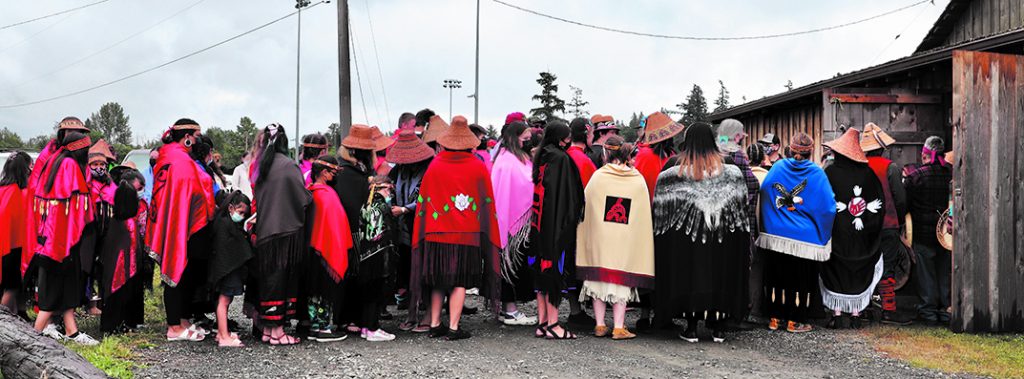
As Bernie mentioned, the Salmon Ceremony was actually practiced for hundreds of years pre-colonialism. During the assimilation era, all Indigenous traditions, ceremonies and even the use of traditional languages were outlawed by the US Government across the country. For several generations, there was no Salmon Ceremony celebration at Tulalip. That is, until 1976 when a group of elders, led by Harriette Shelton-Dover, brought the tradition back.
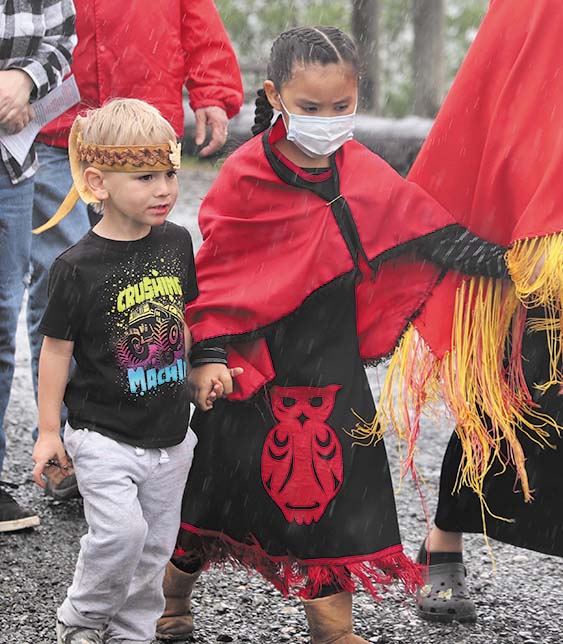
Said Tulalip Vice-Chairman Glen Gobin, “after the treaty signing and after the boarding school era, much of our teachings were taken away. We were not able to speak our languages. We were not able to live with our families. Much of what we had as a culture was disappearing quickly. Some of the elders remembered certain aspects and would share those memories of how things used to be. The elders in 1976, Harriette in particular, said we need to revive Salmon Ceremony, we need to bring it back. She gathered up different elders and they pieced together what each of them knew about the Salmon Ceremony from either things they personally witnessed or things they heard their grandparents talk about.”
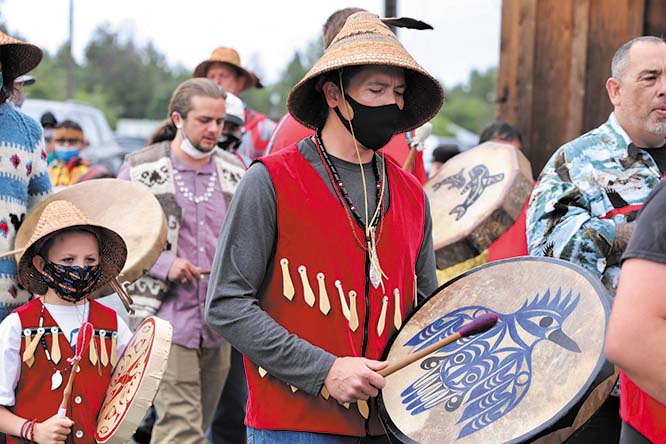
He continued, “Harriette always said that so much was taken from us and what we do today may not be exactly the same way it was done two hundred years ago. But as long as we do it with good intentions and with a pure heart, our elders will receive it in that manner. So, we hang on to those bits and pieces that we have and we’re thankful for them.”
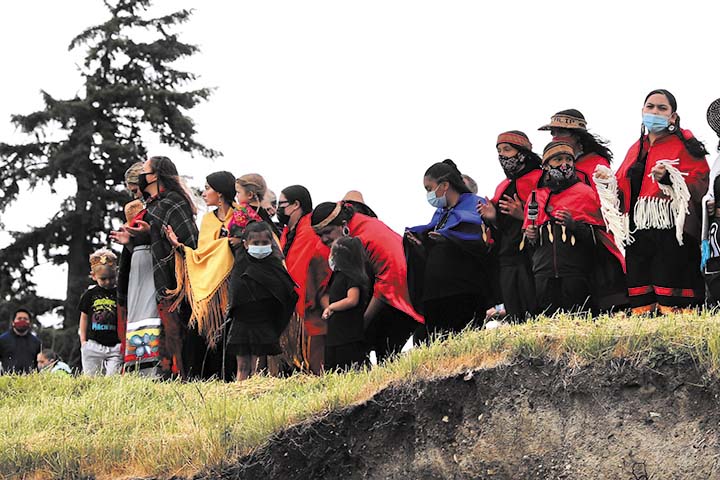
Ever since the revival, with the exception of 2020, the Tribe has turned out in large numbers, adorning cedar woven hats and headbands, traditional shawls, and beaded jewelry to welcome the guest of honor, the representative hailing from the underwater village. They sing passionately in the language of the ancestors, they keep time with elk and deer hide hand drums. They dance and feast in honor of the salmon people. And they keep the traditions and teachings of their own people alive and strong.
* Bates, Ann and Karen Bayne. 1993. Tulalip History and Culture: Supplemental Class Materials. Marysville: The Tulalip Tribes, Marysville School District, Catholic Community Services of Snohomish County. https://www.tulaliplearningjourney.org
